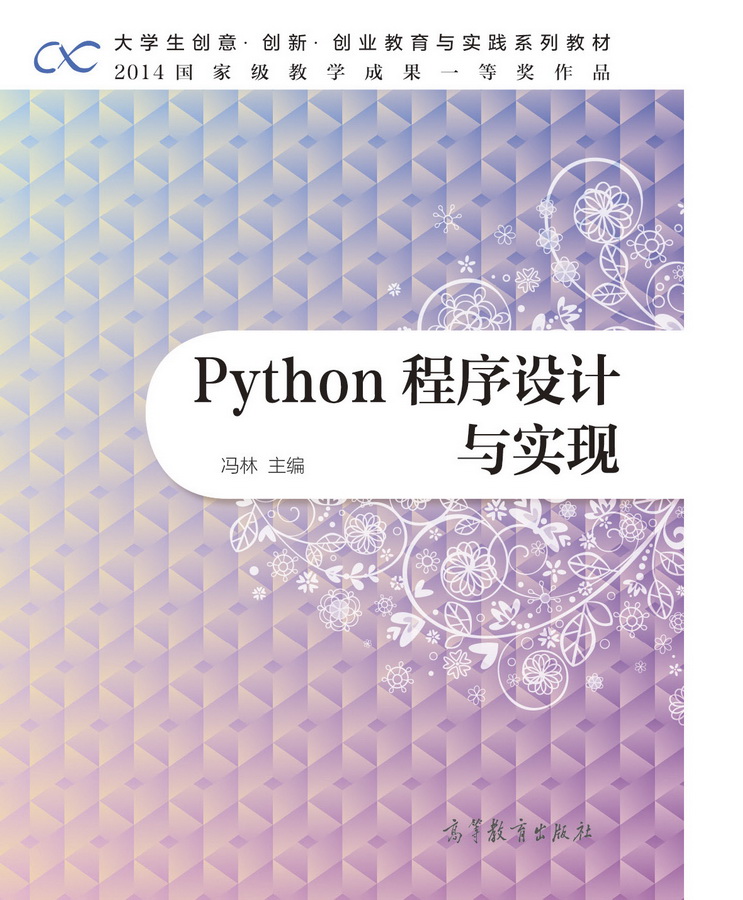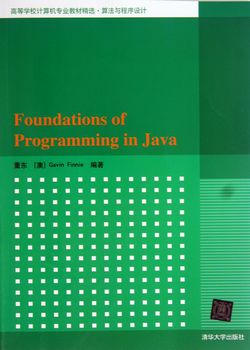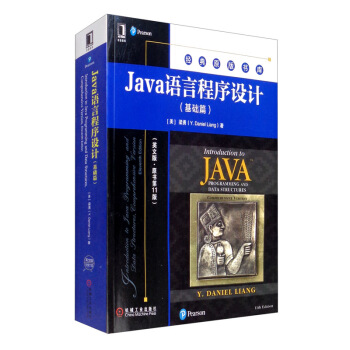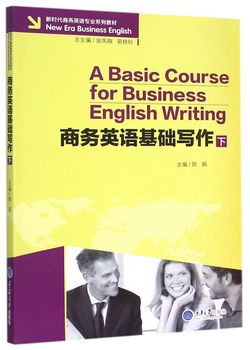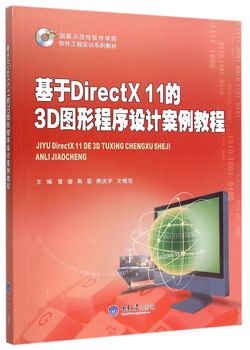正确写作美国大学生数学建模竞赛论文(第2版)
作者: Jay Belanger等
出版时间:2017-06
出版社:高等教育出版社
- 高等教育出版社
- 9787040476729
- 1版
- 95027
- 46254652-4
- 平装
- 特殊
- 2017-06
- 540
- 418
- 理学
- 数学
- O141.4
- 信息、电子、计算机类
- 本科
本书讨论如何撰写美国大学生数学建模竞赛论文。书中包括两部分内容:一部分是地道的英文内容,另一部分为与之对应的中文介绍,这样安排的目的是培养读者用英文写作及思考的习惯,有困难时可以查看中文内容;或者先快速了解中文,再看英文表达。主要内容包括:简介、文章结构、文体、英语的用法、数学符号、数学表达、图形和表格、修改实例、写作训练,最后通过实例讲解如何写出优胜论文的注意事项和技巧等。在附录部分介绍了参赛规则并给出了参赛论文LATEX模板。
本书可以作为学习和准备美国大学生数学建模竞赛的指导用书,也可供写作科技论文参考使用。
前辅文
Part IWrite Right for the American Mathematical Contest in Modeling
Chapter 1 Overview
1.1 A Brief History
1.1.1 The MCM contest
1.1.2 The ICM contest
1.1.3 Chinese participation
1.1.4 The modeling contests
1.2 Writing for the MCM/ICM
1.2.1 A general approach
1.2.2 Write right for the MCM/ICM
1.3 Judging
1.3.1 Paper classifications and awards
1.3.2 Judging criteria
1.3.3 The judging process
Exercises
Bibliography
Chapter 2 Proper English
2.1 English Usage
2.2 Languages and Rules
2.3 Paragraphs
2.4 Sentences
2.4.1 Avoid expressing multiple thoughts in one sentence
2.4.2 Make sure your subject and verb agree
2.5 Words and Phrases
2.5.1 Avoid misusing words with similar spellings
2.5.2 Avoid misusing words with similar meanings
2.5.3 Use a variety of verbs
2.5.4 Use apostrophes correctly
2.5.5 Use unobtrusive pronouns
2.5.6 Use articles properly
2.5.7 Use prepositions correctly
Exercises
Bibliography
Chapter 3 Style
3.1 Basics
3.1.1 Write in first person, plural
3.1.2 Use the present tense
3.1.3 Prefer the active voice
3.1.4 Put the action in the verb
3.2 Paragraphs and Sentences
3.2.1 Use short paragraphs
3.2.2 Use simple sentences
3.2.3 Omit trivialities
3.3 Words and Phrases
3.3.1 Use simple words and phrases
3.3.2 Use words as specific as you can
3.3.3 Use transition words
3.3.4 Use parallel phrasing to emphasize similarities
3.3.5 Avoid pointless repetition
3.3.6 Avoid using the same word for different purposes
3.3.7 Keep the antecedents of any pronouns clear
3.3.8 Use ``that'' and ``which'' correctly
3.4 Visualization
3.4.1 Make your paper visually simple
3.4.2 Use vertical lists properly
Correct use of colon before a vertical list
Punctuating vertical lists
3.4.3 Use tables to present information concisely
3.4.4 Use graphs appropriately
3.4.5 Do not overstate your results
Exercises
Bibliography
Chapter 4 Mathematical Writing
4.1 Symbols
4.1.1 Make sure the same symbol is always read the same
4.1.2 Remove symbols that are used only once
4.1.3 Use each symbol for only one purpose
4.1.4 Do not use symbols for words
4.1.5 Spell out numbers that are used as adjectives
4.1.6 Avoid unnecessary subscripts
4.1.7 Keep subscripts in the same order
4.1.8 Avoid using symbols in titles
4.2 Stick with Notational and Typographical Conventions
4.3 Notation and Terminology
4.3.1 Be consistent
4.3.2 Define notation and terminology as you use them
4.4 Math and Sentences
4.4.1 Give the reader useful reminders along the way
4.4.2 Do not begin a sentence with a symbol
4.4.3 Separate different formulas with words
4.4.4 Do not overload math terms
4.4.5 Make sure that every ``if'' has a ``then''
4.4.6 Use quantifiers properly
4.5 Equations
4.5.1 Use inline and displayed equations appropriately
4.5.2 Typeset displayed equations properly
4.5.3 Punctuate mathematical expressions
4.5.4 Make your fractions readable
4.5.5 Align your ellipses properly
4.6 Typesetting
4.6.1 \LaTeX
4.6.2 MathType
Exercises
Bibliography
Chapter 5 Writing for the MCM/ICM
5.1 Good Structure Goes a Long Way
5.2 The Introduction
5.3 The Body
5.3.1 Clearly state assumptions and justifications
5.3.2 Explain your model design
5.3.3 Test your model
5.3.4 Discuss your model's strengths and weaknesses
5.4 The Conclusion
5.5 The Summary
Exercises
Bibliography
Chapter 6 Revising
6.1 Things to Do
6.2 Revising a Title
6.3 Revising a Summary
6.3.1 Revising
6.3.2 Revised
6.4 Revising an Introduction
6.4.1 Revising
6.4.2 Revised
6.5 Revising Assumptions
6.5.1 Revising
6.5.2 Revised
Exercises
Chapter 7 Practice Writing I
7.1 The Keep-right-except-to-pass Rule
7.2 Writing a Summary
7.2.1 Comments
7.2.2 Final version
7.3 Writing an Introduction
7.3.1 Comments
7.3.2 Final version
7.4 Writing Assumptions and Justifications
7.5 Writing with Symbols
7.5.1 Comments
7.5.2 Final version
7.6 Writing Strengths and Weaknesses
7.6.1 Comments
7.6.2 Final version
7.7 Writing a Conclusion
7.7.1 Comments
7.7.2 Final version
Exercises
Chapter 8 Practice Writing II
8.1 College Coaching Legends
8.2 Writing a Summary
8.2.1 Comments
8.2.2 Final version
8.3 Writing an Introduction
8.3.1 Comments
8.3.2 Final version
8.4 Writing Assumptions and Justifications
8.4.1 Assumptions for the first model
8.4.2 Comments for the first model
8.4.3 Final version for the first model
8.4.4 Assumptions for the second model
8.4.5 Comments for the second model
8.5 Writing Model Designs
8.5.1 Comments
8.5.2 Final version
8.6 Writing Strengths and Weaknesses
8.6.1 Strengths and weaknesses for the first model
8.6.2 Comments for the first model
8.6.3 Final version for the first model
8.6.4 Strengths and weaknesses for the second model
8.6.5 Comments for the second model
8.6.6 Final version for the second model
8.7 Writing a Conclusion
8.7.1 Comments
8.7.2 Final version
Exercises
Chapter 9 Practice Writing III
9.1 Using Networks to Measure Influence and Impact
9.2 Writing a Summary
9.2.1 Comments
9.2.2 Final version
9.3 Writing an Introduction
9.3.1 Comments
9.3.2 Final version
9.4 Writing Related Prior Work
9.4.1 Comments
9.4.2 Final version
9.5 Writing Assumptions and Justifications
9.5.1 Comments
9.5.2 Final version
9.6 Writing Model Designs
9.6.1 Comments
9.6.2 Final version
9.7 Writing Strengths and Weaknesses
9.7.1 Comments
9.7.2 Final version
9.8 Writing a Conclusion
9.8.1 Comments
9.8.2 Final version
Exercises
Bibliography
Chapter 10 Writing a Winning Paper: Judging Insights\$\frac $\qquad\qquad\quad and Examples
10.1 Common Pitfalls
10.1.1 Summary
10.1.2 Multiple methods
10.1.3 Common-sense test
10.2 Multi-attribute Decision Making
10.2.1 Example
10.2.2 Common approaches to MADM problems
10.3 Data Envelopment Analysis
10.3.1 Methodology
10.3.2 Strengths and limitations
10.3.3 Sensitivity analysis
10.3.4 Examples
10.4 Simple Additive Weighting
10.4.1 Methodology
10.4.2 Strengths and limitations
10.4.3 Sensitivity analysis
10.4.4 Examples
10.5 Analytical Hierarchy Process
10.5.1 The 9-point scale
10.5.2 Strengths and limitations
10.5.3 Sensitivity analysis
10.5.4 Examples
10.6 Technique for Order Preference by Similarity to an Ideal\$\frac $\qquad Solution
10.6.1 Methodology
10.6.2 Strengths and limitations
10.6.3 Sensitivity analysis
10.7 Examples
Exercises
Bibliography
Part Ⅱ 正确写作美国大学生数学建模竞赛论文
第1章 概述
1.1 竞赛简史
1.1.1 美国数学建模竞赛
1.1.2 美国交叉学科建模竞赛
1.1.3 中国参赛情况
1.1.4 MCM/ICM竞赛
1.2 竞赛论文写作
1.2.1 写作的一般规律
1.2.2 正确撰写MCM/ICM 竞赛论文
1.3 论文评审
1.3.1 论文等级划分和奖项
1.3.2 评审标准
1.3.3 评审过程
练习
参考文献
第2章 正确使用英文
2.1 英语用法
2.2 语言和规则
2.3 段落
2.4 句子
2.4.1 避免在一个句子里表达多个意思
2.4.2 保持主谓语一致
2.5 单词和短语
2.5.1 避免错误使用形近词
2.5.2 避免错误使用近义词
2.5.3 使用丰富多样的动词
2.5.4 正确使用撇号
2.5.5 使用无争议的代词
2.5.6 正确使用冠词
2.5.7 正确使用介词
练习
参考文献
第3章 写作规范
3.1 基本要求
3.1.1 使用第一人称复数代词
3.1.2 使用现在时态
3.1.3 使用主动语态
3.1.4 使用动词表示动作
3.2 段落和句子
3.2.1 使用简短的段落
3.2.2 使用简单句
3.2.3 略去琐碎细节
3.3 单词和短语
3.3.1 使用简单的单词和短语
3.3.2 使用有具体含义的词汇
3.3.3 使用过渡词
3.3.4 使用并列短语强调相似性
3.3.5 避免单调重复
3.3.6 避免使用同一词汇描述不同的对象
3.3.7 代词所指的名词必须清晰
3.3.8 正确使用that和which
3.4 视觉效果
3.4.1 让论文看上去简单
3.4.2 正确使用列表
3.4.3 使用表格简洁地展示信息
3.4.4 正确使用图形
3.4.5 不过分渲染论文结果
练习
参考文献
第4章 数学表达式
4.1 数学符号
4.1.1 同一符号多次出现时读法应一致
4.1.2 删除只使用一次的符号
4.1.3 每个符号只做一个用途
4.1.4 不用符号取代文字
4.1.5 数字作为形容词时应写为文字
4.1.6 避免不必要的下标
4.1.7 保持下标顺序一致
4.1.8 标题中不要使用数学符号
4.2 符合符号和排版的习惯用法
4.3 符号和术语
4.3.1 保持一致
4.3.2 符号和术语在使用时定义
4.4 数学表达式与句子
4.4.1 为读者提供必要的提示
4.4.2 不要把符号放在句首
4.4.3 用文字分隔不同的表达式
4.4.4 数学词汇不要一词多用
4.4.5 每一个if都应该对应一个then
4.4.6 正确使用量词
4.5 公式
4.5.1 正确使用行内公式和占行公式
4.5.2 正确书写占行公式
4.5.3 给数学表达式加标点
4.5.4 分数的写法
4.5.5 对齐省略号
4.6 论文排版
4.6.1 \LaTeX
4.6.2 MathType
练习
参考文献
第5章 MCM/ICM竞赛论文写作
5.1 论文结构合理
5.2 关于引言
5.3 论文主体
5.3.1 陈述假设条件并解释
5.3.2 解释模型设计
5.3.3 检验模型
5.3.4 讨论模型的优缺点
5.4 关于结论
5.5 关于摘要
练习
参考文献
第6章 论文修改示例
6.1 修改的重点
6.2 如何修改标题
6.3 修改摘要
6.3.1 修改过程
6.3.2 修改后的摘要
6.4 修改引言
6.4.1 修改过程
6.4.2 修改后的引言
6.5 修改假设条件
6.5.1 修改过程
6.5.2 修改后的假设条件
练习
第7章 写作练习一
7.1 靠右行驶除非超车规则
7.2 撰写摘要
7.2.1 点评
7.2.2 修改稿
7.3 撰写引言
7.3.1 点评
7.3.2 修改稿
7.4 撰写假设
7.5 数学符号的写法
7.5.1 点评
7.5.2 修改稿
7.6 撰写模型的优缺点
7.6.1 点评
7.6.2 修改稿
7.7 撰写结论
7.7.1 点评
7.7.2 修改稿
练习
第8章 写作练习二
8.1 大学教练联盟
8.2 撰写摘要
8.2.1 点评
8.2.2 修改稿
8.3 撰写引言
8.3.1 点评
8.3.2 修改稿
8.4 撰写假设
8.4.1 第1个模型的假设
8.4.2 点评
8.4.3 修改稿
8.4.4 第2个模型的假设
8.4.5 点评
8.5 撰写模型设计
8.5.1 点评
8.5.2 修改稿
8.6 撰写模型的优缺点
8.6.1 第1个模型的优缺点
8.6.2 点评
8.6.3 修改稿
8.6.4 第2个模型的优缺点
8.6.5 点评
8.6.6 修改稿
8.7 撰写结论
8.7.1 点评
8.7.2 修改稿
练习
第9章 写作练习三
9.1 使用网络模型评价影响力和重要性
9.2 撰写摘要
9.2.1 点评
9.2.2 修改稿
9.3 撰写引言
9.3.1 点评
9.3.2 修改稿
9.4 撰写相关研究工作综述
9.4.1 点评
9.4.2 修改稿
9.5 撰写假设
9.5.1 点评
9.5.2 修改稿
9.6 撰写模型设计
9.6.1 点评
9.6.2 修改稿
9.7 撰写模型的优缺点
9.7.1 点评
9.7.2 修改稿
9.8 撰写结论
9.8.1 点评
9.8.2 修改稿
练习
参考文献
第10章 如何撰写优胜论文: 来自评委的建议与实例
10.1 常见错误
10.1.1 摘要
10.1.2 多种方法
10.1.3 常理检验
10.2 多属性决策
10.2.1 实例
10.2.2 多属性决策问题的常规步骤
10.3 数据包络分析法
10.3.1 方法
10.3.2 优缺点
10.3.3 敏感性分析
10.3.4 实例
10.4 简单加权法
10.4.1 方法
10.4.2 优缺点
10.4.3 敏感性分析
10.4.4 实例
10.5 层次分析法
10.5.1 方法
10.5.2 优缺点
10.5.3 敏感性分析
10.5.4 实例
10.6 TOPSIS方法
10.6.1 方法
10.6.2 优缺点
10.6.3 敏感性分析
10.7 实例
练习
参考文献
Appendix A A Sample \LaTeX Template
Appendix B Common \LaTeX Math Symbols
Appendix C 参赛须知




